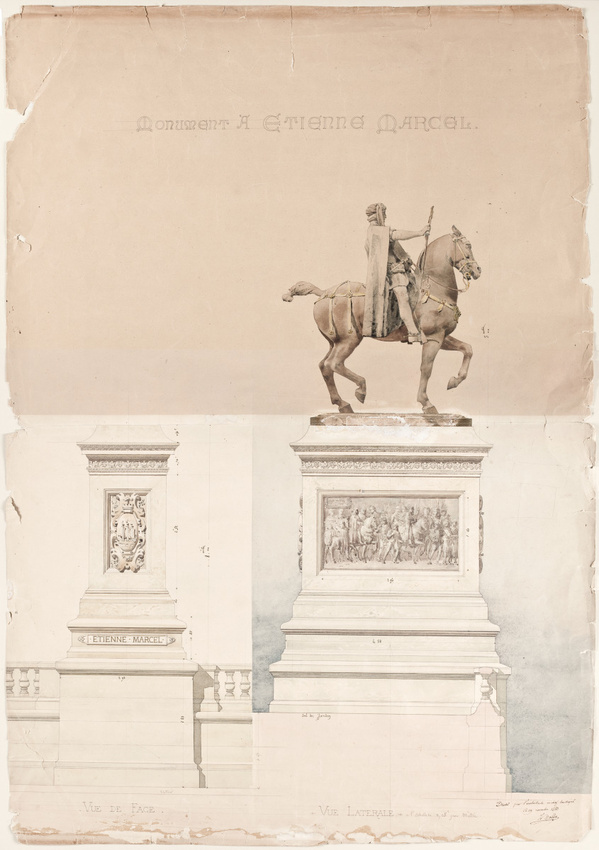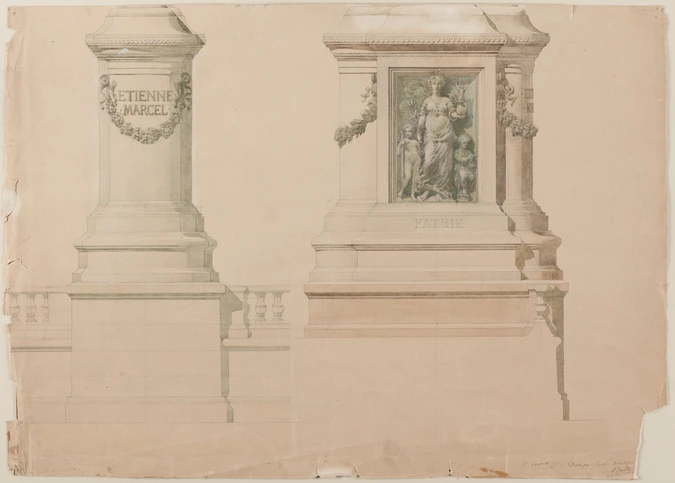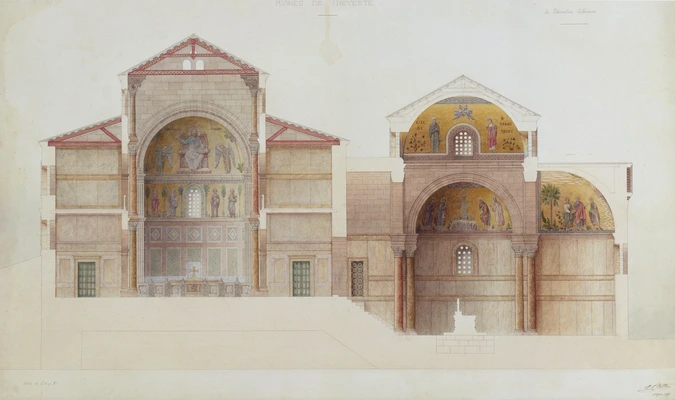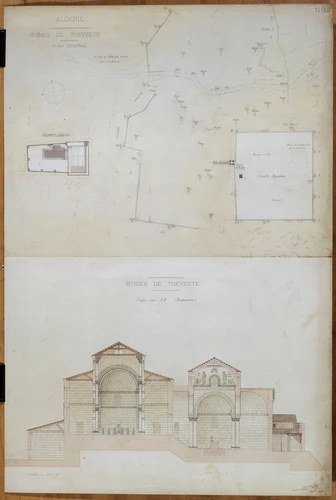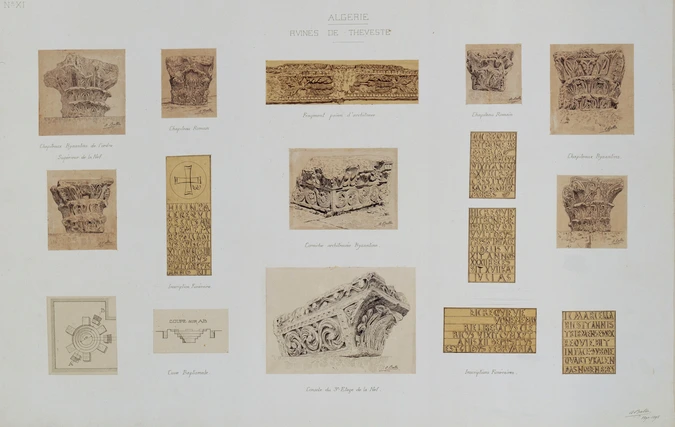Projet de piédestal pour la statue d'Etienne Marcel, vue de face et vue latérale
When walking around Paris today, one can still see a large equestrian statue of Etienne Marcel (1315-1358) dating from 1888, next to the Hotel de Ville. The Merchants' Provost at the time when King John the Good (Jean Le Bon) was a prisoner of the English, this figure from Parisian history became famous once more on the eve of the centenary of the French Revolution. In 1357, he had imposed an important decree on the young Dauphin, the future Charles V, with provisions for control of the public finances by the States General, a fairer distribution of tax revenues and an advisor to the Dauphin himself. These measures, which effectively gave the Merchants' Provost the powers of a mayor of Paris, made him appear, five centuries later, as a champion of democracy.
After a competition launched in 1882, Jean Antoine Idrac (1849-1884), was commissioned to produce the statue, but was replaced after his premature death by Laurent Marqueste (1848-1920).
For the design of the pedestal, the authorities called upon Théodore Ballu (1817-1885), chief architect for public works at the Hôtel de Ville. On his death, his son Albert Ballu took up the project. Albert first thought of decorating the base with low reliefs as presented in this sketch. But this design was abandoned, and on 15 July 1888 the group was inaugurated on an undecorated base. The pedestal with its foundation stood eight metres off the ground.
This drawing, along with another also in the Musée d'Orsay, is a rare example of one of the ordinary, relatively common pieces of municipal sculpture by 19th century architects. This one is, moreover, one of the most famous monuments of the young Third Republic, along with those dedicated to Joan of Arc.
